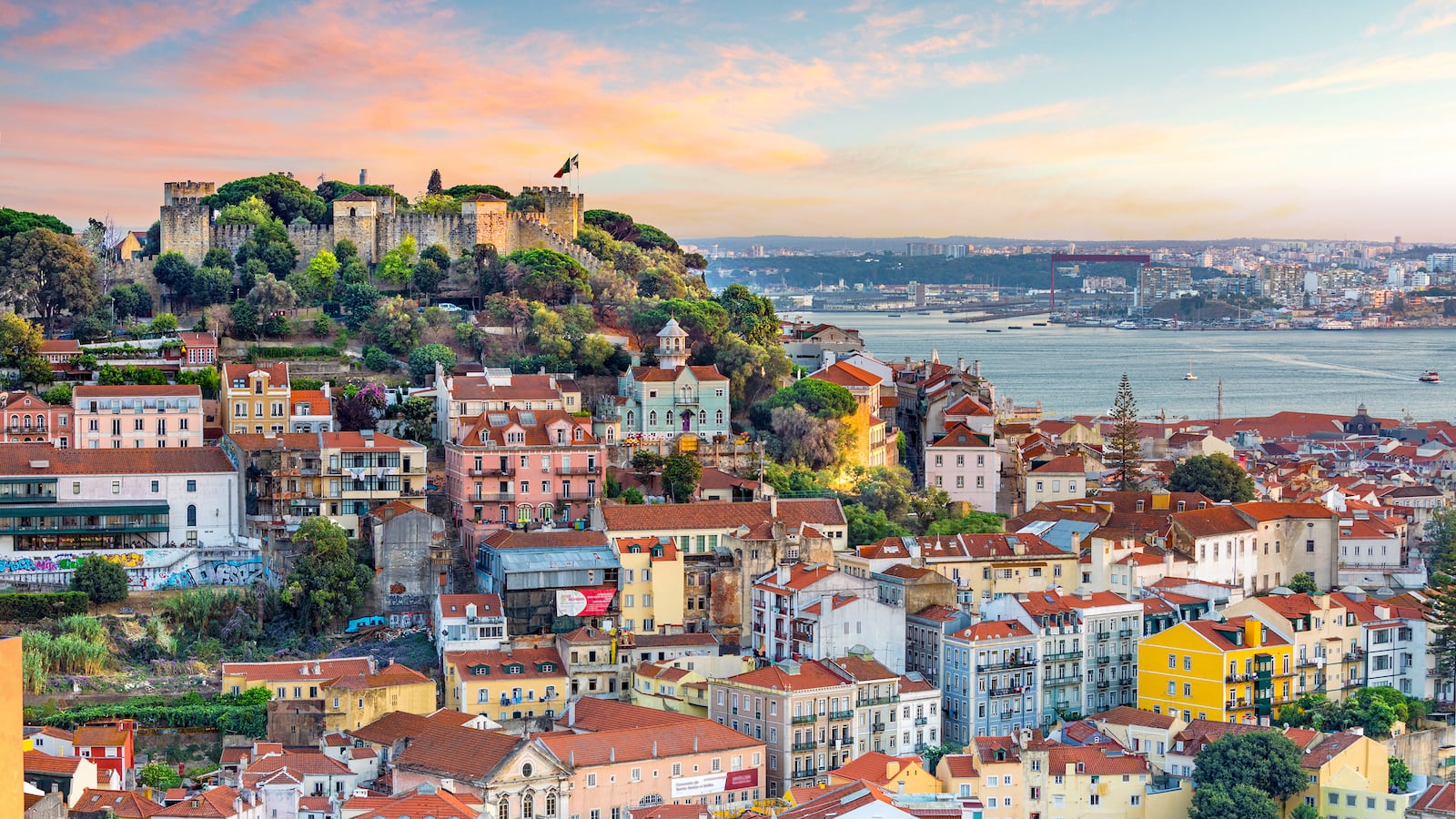Portugal is known for its beaches, as a place where you can sprawl out on the sand for a day, or walk around the corner to pick up some grilled sardines,a glass of red wine, and just relax. Over the past decade, this once well-kept secret has etched its way into a hot spot destination. Because Portugal is on every list, and one of my favorite places to visit in the summer, I wanted to see what it was like to visit in the off season—if the space still had its sun-kissed charm and effervescent cobblestone streets, but a little more elbow room.
My trip began in Lisbon, a city I know and love, but which has always been crowded. A day in Lisbon in the spring or summer can feel like being stuffed into a subway car at rush hour, like the tinned fish the country is famous for. This was not the case in the winter. Instead, it might be better described as parallel to having a Wes Anderson movie set entirely to myself.
Straining up hills, turning around to catch glimpses of the sun poking through the clouds and reflecting off the water, the city felt empty in the best possible way. There was still a life force teeming through it though, an energy of workers, and shoppers, blazing down avenues and side streets, ordering pastries (pastel de nata, especially) and espresso at cafes, but at the same time, nothing was ever crowded, nothing felt claustrophobic—instead it felt like the city was breathing at a normal rate, for once.
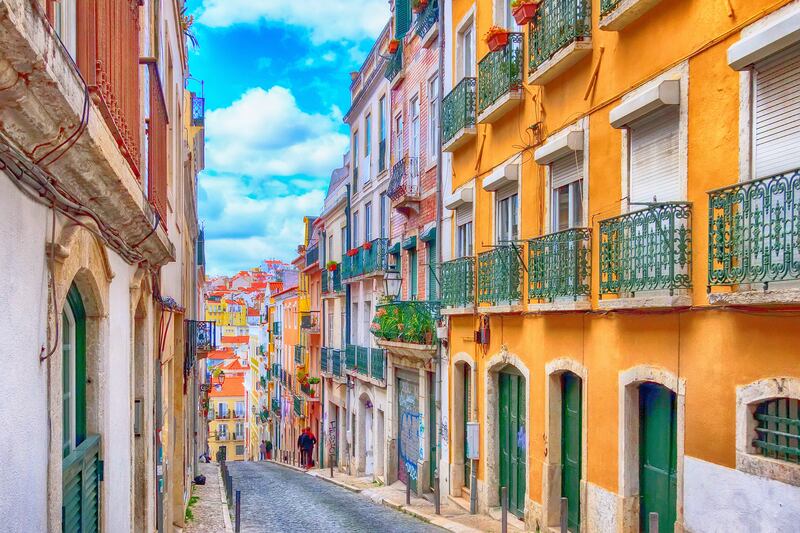
Every restaurant, museum, and store I walked into was half-full at best—enough to show signs of life, but not enough that would strand a visitor without a place to grab dinner. I walked into Belcanto, the Michelin Star restaurant recreating Portuguese cuisine in a vegetarian light, I strolled into A Cevecheria for lunch, a Peruvian ceviche spot dishing out pisco sours and fresh seafood, and I wandered through the new royal jewels museum almost entirely alone. The entire time I thought about how long I had to queue in London to see those royal jewels, and how these ones were better, anyway.
I worried this idyllic trip would end when it came time to head to Sintra, but I was wrong. It only continued. Sintra, a mountainous region just 30 minutes north of Lisbon is accessible by car, and travelers usually make a day trip out of this. However, there is so much to do and see there, so I spent two days there instead. Especially in the early winter, late fall, the leaves were changing ever so slightly, and the palaces surrounding the hilly one-way roads looked elegant and inviting. I was fortunate enough to be hosted by Tivoli Palacio De Seteais, an 18th century palace renovated into a hotel. With only 36 bedrooms, a sprawling garden and view of Sintra, it’s worth visiting in its own right even if you don’t plan on spending the night. The hotel itself is adorned with furniture that fits the 18th century decor, and the walls are coated in original frescos from the period. Walking around the hotel at dark, it felt like around every corner there was a mystery to be unearthed.
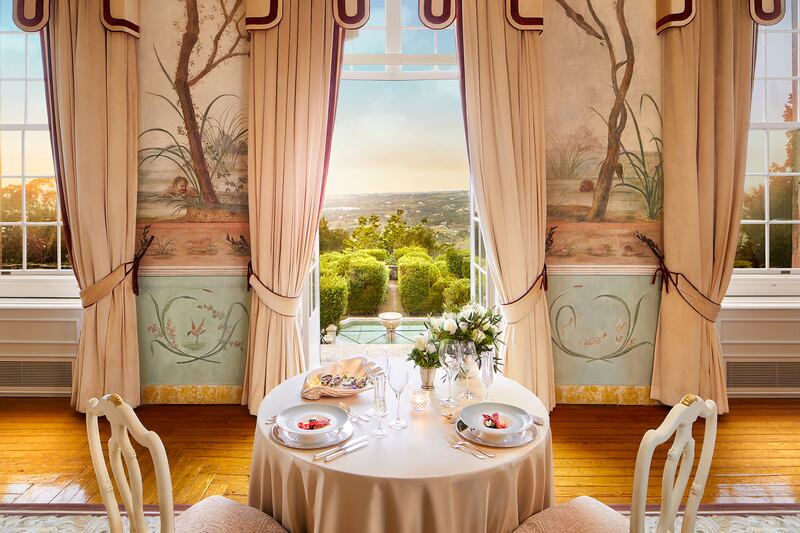
Tivoli Palacio Seteais.
2BPRAboard a Tuk Tuk, we revved up the hilly roads towards Pena Palace, one of the most popular attractions, renowned for its 19th-century romantic architecture. My guide mentioned that I should get there early, as the lines during the busy season can stretch all the way down the hill, and so I did. And yet, throughout my entire visit roaming the palace and its grounds, examining antique furniture and views of Sintra below, I only saw only a few people scattered here and there. I was grateful—it was even more magical to have the place almost entirely to myself.
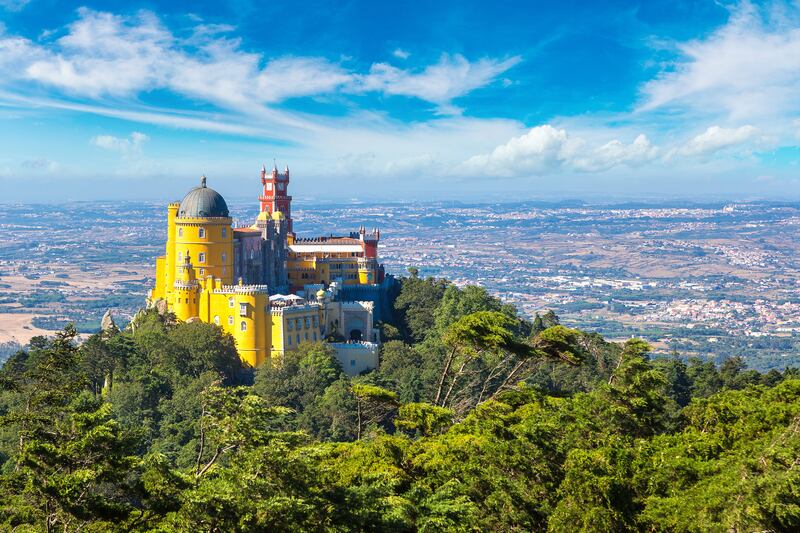
The same was true of every other palace I visited in Sintra, from the Moorish castle, a walled fortress at the top of the highest hill in the area with overlooks to the water on a clear day, to the Quinta de Regaleria, a 16th century style renaissance manor built by what my Tuk Tuk driver described as a “weird dude.” Strolling around the palace grounds at sunset, and observing the ivy-laden towers, chapels stretching up towards the sky, and even a trickling waterfall, reverberating sound throughout the grounds, I could have spent forever there, listening to the solitary saxophone player etch out noise into the clouds.
After a few days in Sintra, I drove down south to the Algarve region, located on the very bottom of Portugal, renowned for its wine making and its beaches. I was worried about this part of the trip—after all, going to the beach in the beginning of December sounds strange—and yet it turned out to be my favorite part. I stayed at Tivoli Carvoeiro, a recently refurbished resort with a much more modern architecture than where I stayed in Sintra. If in Sintra I stayed in a palace, here, in the Algarve, I was back at a traditional beach resort—albeit this one is perched atop a limestone cliff, overlooking the Atlantic.
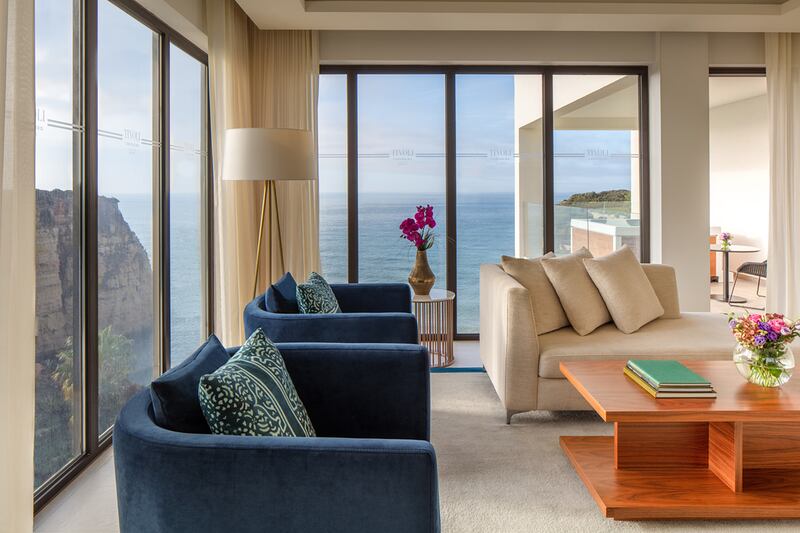
Tivoli Carvoeiro.
2BPRWhile I heard guests mumbling at breakfast about the resort not having direct access to a swimmable beach, I didn’t mind. The view from the hotel, and out my room, was excellent enough. Perhaps it’s because I am not a beach person (sand gets everywhere) and so being able to stroll above the deserted shores, along the lush gardens of the hotel, without the pressure to dive into the salty waters made it all the more relaxing.
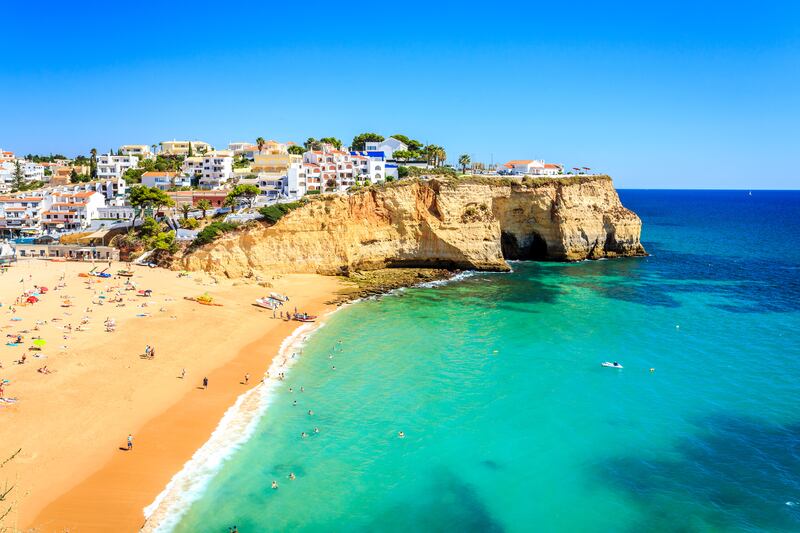
Besides, the Algarve has plenty more to do than party on the beach. I was fortunate enough to spend a sunny afternoon in the vineyards of Morgado de Quintão, a local winery, serving up traditional Portuguese cuisine along with delicious wines under a 2,000 year old olive tree in the garden. From there, I walked off the salted pork and sweet potato leaves (my new favorite part of the sweet potato) by hiking the Seven Hanging Valleys, a 6 kilometer route along the coastline, suspended above the beach via limestone archways. Again, it was almost entirely abandoned, making it all the more peaceful. The trail was speckled with juniper bushes, and agaves shipped in from North America to demarcate land. And the coastline, because it’s marked with limestone rock, is constantly eroding, yet still has houses perched, almost dangling from atop the cliffs.
“There’s no other place in Europe where you can sit on your deck and look at the beach,” my guide said over the subtle sound of waves crashing hundreds of feet below. I nodded, and thought to myself, especially in the dead of winter.
